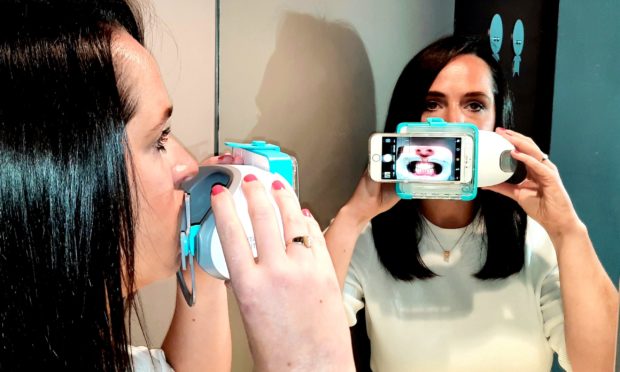A Dundee specialist orthodontic practice is one of the first in Scotland to support patients during lockdown.
Beam Orthodontics is now using Dental Monitoring, a smartphone app which allows patients to scan their teeth, with images sent to clinicians for assessment.
The technology represents significant investment by the practice at £60,000 for the first year and follows a £300,000 outlay on expanding its South Tay Street premises.
The patient is also given a ScanBox which holds their smartphone in the correct position.
Digital images are then taken, assessed and subjected to AI algorithms which can detect and advise aligner fit, aligner damage, oral hygiene levels, inflammation of the gums and recession.
If there are any discrepancies, Beam is alerted.
Beam founder Rhu McKelvey said the Covid-19 pandemic had accelerated the use of the technology, which has artificial intelligence at its core.
He said: “This kind of technology was always going to arrive, but it’s got here much quicker because of Covid-19.
“In terms of how we have adapted to the pandemic, this is the clinical version of the Zoom effect on changing how business meetings are held.”
The technology is already used in French care homes and allows reduced contact with vulnerable patients.
Mr McKelvey said the artificial intelligence used by the app meant it could filter out images where the patient’s treatment was going according to plan.
He said: “The technology flags up any issues and significantly reduces the number of appointments they need to attend.
“It’s also increasing our engagement with patients and the accuracy of that engagement.”
The move follows a successful pilot programme last year and around 200 patients have transferred over to the app since the implementation of Covid-19 restrictions.
The technology also enables initial consultations to take place for patients, allowing clinicians to identify issues and establish if braces are required.
A scaled back version of the app, which does not use artificial intelligence has also been introduced which gives clinical staff the ability to give advice on particular issues.
Mr McKelvey said the use of the technology had increased at the practice during the pandemic and it would also play an increasingly important role in the global dental market in the months and years ahead.
“Some aspects of the changes we have seen during the Covid-19 restrictions may be here to stay and the use of technology such as this which reduces travel requirements and physical contact will grow,” he added.
jimillar@thecourier.co.uk
